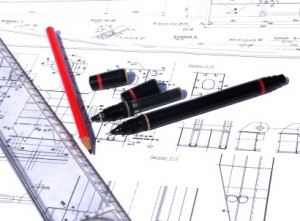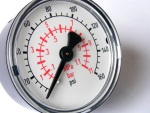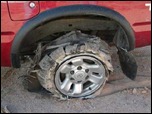 There have probably been enough texts written on this subject to reconstruct the wall of China entirely from project management books alone. These books commonly expound the virtues of the latest management techniques that will allegedly solve all of your project management woes. However, how many of these actually offer any true insights into the nature of project management?
There have probably been enough texts written on this subject to reconstruct the wall of China entirely from project management books alone. These books commonly expound the virtues of the latest management techniques that will allegedly solve all of your project management woes. However, how many of these actually offer any true insights into the nature of project management?
Project management is nothing new. The ancient Egyptians could not have completed their amazing feats of civil engineering without it. Furthermore, they managed to achieve their awe inspiring constructions without any fancy project management software. They would undoubtedly have been very well organised, but would also of had that key secret ingredient found in every successful project; an ingredient you can not see, but one that is essential (in the correct amounts) to the smooth running and timely completion of any project.
The Secret Ingredient
 So what is this secret ingredient of which I speak? Well, I shall keep you in suspense no longer, it is pressure.
So what is this secret ingredient of which I speak? Well, I shall keep you in suspense no longer, it is pressure.
Admittedly it does not sound very inspiring or revelatory, but bear with me and I shall endeavour to explain why I believe that the amount of pressure within, or applied to a project, is critical to its ultimate success.
Types of Pressure
Pressure within a project is usually manifested in two ways; via financial constraints and/or time constraints. These pressure sources are most commonly applied externally and beyond your control i.e. by your boss or client, but may occasionally be self inflicted.
These two types of pressure are often inextricably linked. While financial pressure may mean you have to design your revolutionary new widget for a cost of X instead of Y, it may also mean that your whole project budget is restricted. In this case you may not be able to apply the same level of resources to the project that you would have ideally liked, consequently leading to an indirectly imposed time constraint.
My Tyre Analogy
Why then do I think that pressure is the secret, overlooked ingredient to a successful project? Surely pressure is something that you would prefer to avoid? Well, the way that I like to think about the application of pressure in a project, and its resultant effects, is by a tyre1 analogy.
A project is like a tyre: it requires the optimal pressure for it to perform at its peak performance.
The Flat Tyre – A Low Pressured Project
 A flat tyre has insufficient pressure for its ideal performance. Anyone that has tried to ride a bicycle with a flat tyre knows how difficult it is to pedal. It requires a lot of additional effort to make the same progress that would otherwise have been made on a correctly inflated tyre and is also very difficult to steer.
A flat tyre has insufficient pressure for its ideal performance. Anyone that has tried to ride a bicycle with a flat tyre knows how difficult it is to pedal. It requires a lot of additional effort to make the same progress that would otherwise have been made on a correctly inflated tyre and is also very difficult to steer.
A project run with little or no pressure is very similar. With no pressure you will undoubtedly procrastinate and fritter away your time, achieving very little whilst becoming increasingly despondent in the process. Just like a perfect gas expands to fill the size of its container, such is the behaviour of an under-pressured project, expanding to fill the time available. To achieve the same ends you will expend much more time and effort than is truly required.
The Over Inflated Tyre – A High Pressured Project
 An over inflated tyre can cause a few potential problems. The first being if the pressure becomes too high, at which point a catastrophic failure is likely to ensue. The second problem with an over inflated tyre is that of steering, which is likely to become very skittish, leading to steering overcompensation and a general lack of control.
An over inflated tyre can cause a few potential problems. The first being if the pressure becomes too high, at which point a catastrophic failure is likely to ensue. The second problem with an over inflated tyre is that of steering, which is likely to become very skittish, leading to steering overcompensation and a general lack of control.
A high pressured project can, at its worst, be a very dangerous thing. Just like an over inflated tyre could explode at any moment, so could you if too much pressure is applied for too long. Having a nervous breakdown and punching your boss’s lights out will do your project no good at all, let alone your career.
If your (or your staff’s) stress levels do not quite reach boiling point, you are likely to be left running your project like a headless chicken; lurching from one crises to another in a reactive fashion as opposed to a planned, methodical approach. With excessive pressure people begin to flap and loose heart. This inevitably leads to wasted time and dangerously unconsidered decisions being made.
The Perfectly Inflated Tyre – The Ideal Project
 A correctly inflated tyre will result in the optimal efficiency and performance of the vehicle in question.
A correctly inflated tyre will result in the optimal efficiency and performance of the vehicle in question.
Similarly, a successfully run project will have sufficient pressure to keep your staff motivated and focused on the tasks to hand, yet not too much pressure to cause undue stress, or too little to cause apathy and procrastination. Achieving this optimal level of pressure is the illusive key.
Managing the Pressure
In my professional career I have managed a host of different projects, some wonderfully successful, others less so.
Too Little
Looking back, I would prefer (if given the choice) to have a project with too much pressure as opposed to too little. Whilst you would think that a project with little pressure would be ideal, I would have disagree. It is very difficult to artificially apply pressure on yourself. You inevitably waste time, becoming bored, disillusioned and totally ineffectual; not a pleasant feeling.
More is Better
As a species we have become quite adept at performing under pressure, as our survival often depended upon it (as may do your job). We perform our best under pressure, producing our best work, often exceeding even our own expectations.
From experience, you are far more likely to encounter higher pressure projects than lower pressured ones. The trick therefore is to try and manage the pressure and prevent it from becoming too excessive, and if you think your staff are not fully pressurised, then it is your duty to apply a bit more pressure to get things moving along!
So remember that pressure is your friend, but like friends, too much of a good thing can become bad.
1 For our American cousins that have perhaps hitherto not been exposed to the correct spelling of tyre, please run this page through a translator of your choice and in the process think yourself lucky that I did not choose to use coloured tyres from my neighbourhood garage in my analogy.

Hi Richard,
As a project manager, I really like the tire analogy to project management. I LOVED the “over-inflated tire”.
Thanks for sharing!
Thanks, it’s an idea that had been floating around my mind for a while. Glad you liked it.
Wise words… it certainly strikes a chord with my own experience.
Couldn’t agree more!
With my Masters thesis at the moment, I can feel the pressure increasing as the deadline draws near. My output is also increasing as the pressure rises.
Put diffrently, I am going to continue to procrastinate untill the day it’s due in then work like a man possessed on hand in day.
I should definately be a project manager.
Hi Eddie, It certainly sounds like you have the key ingredients of a successful project manager! I’ve always thought that procrastination isn’t such a bad thing and wrote a blog article about why I think it can be positive: The Powers of Procrastination